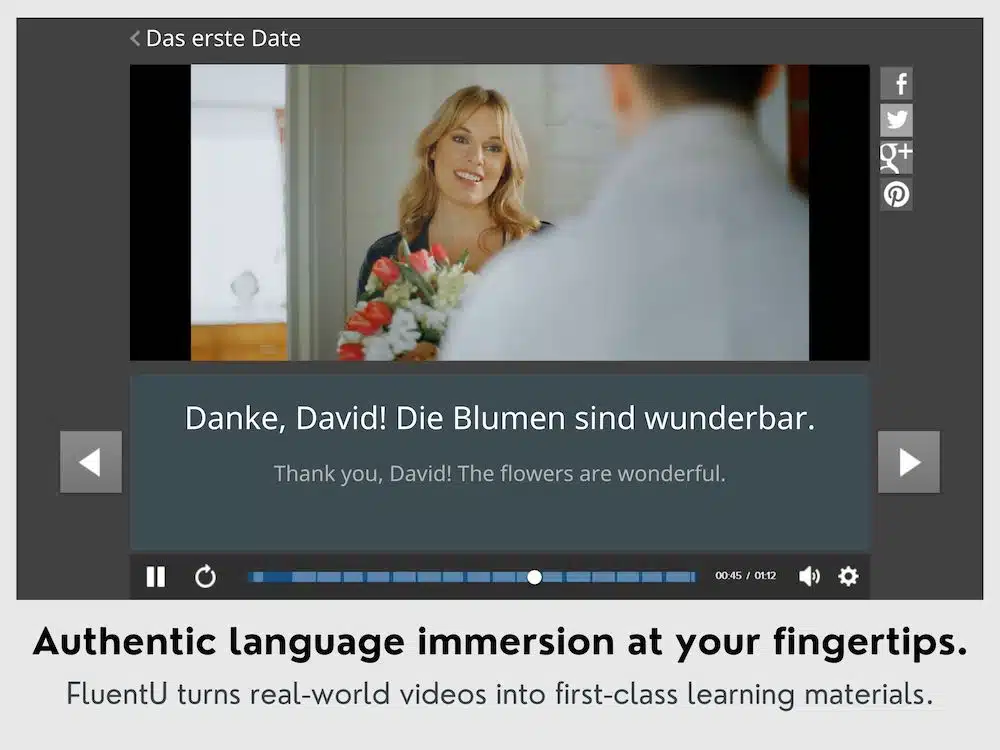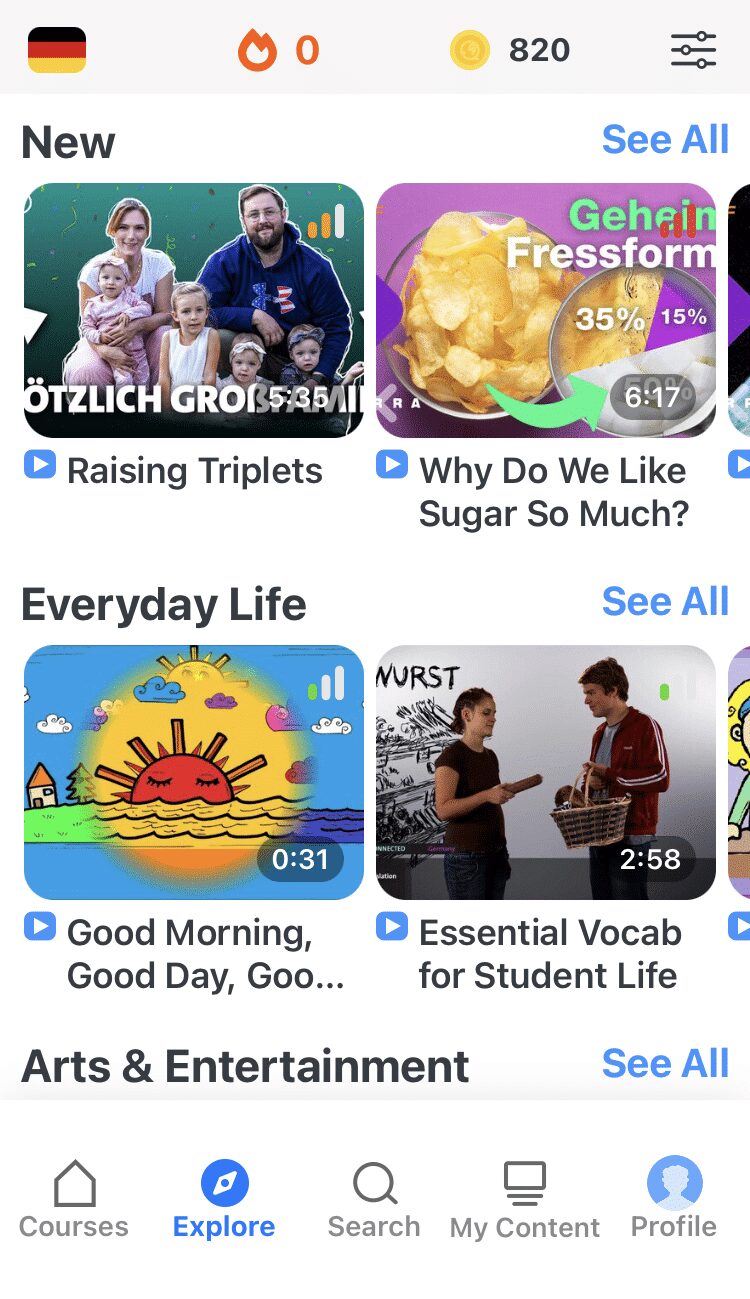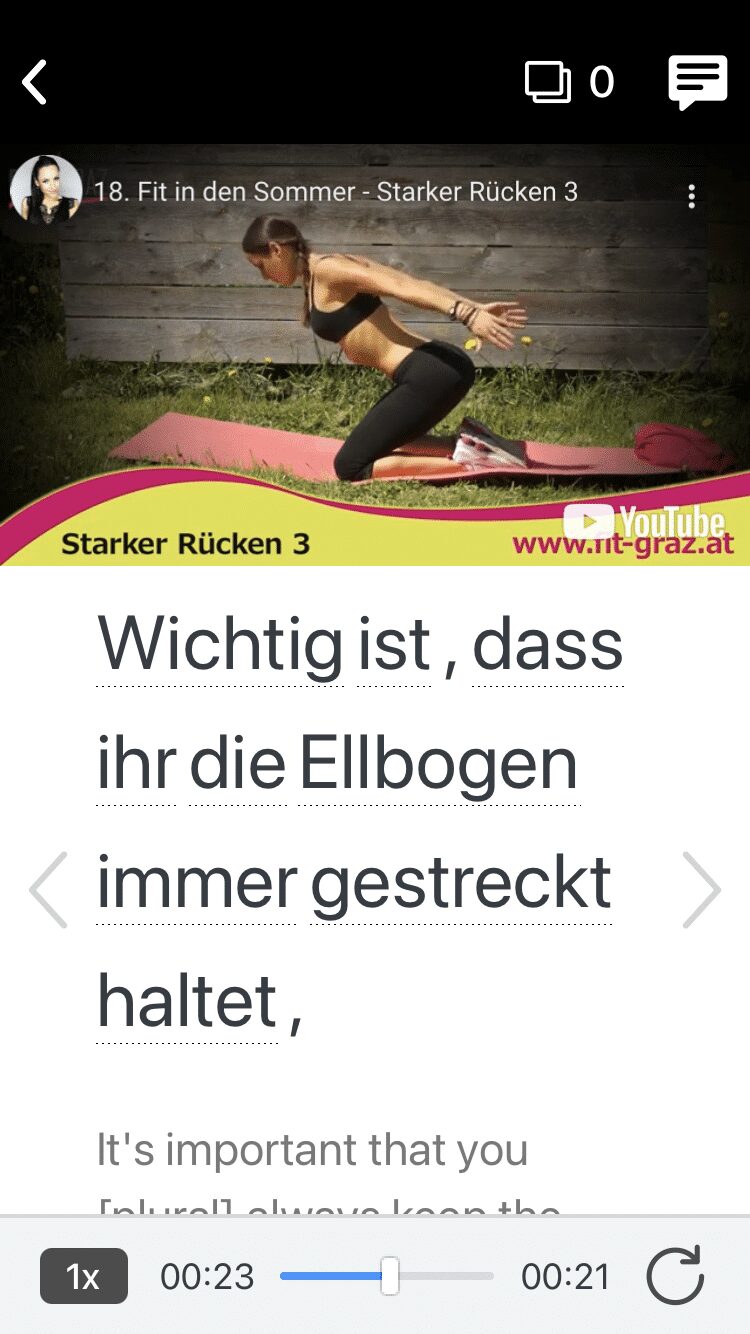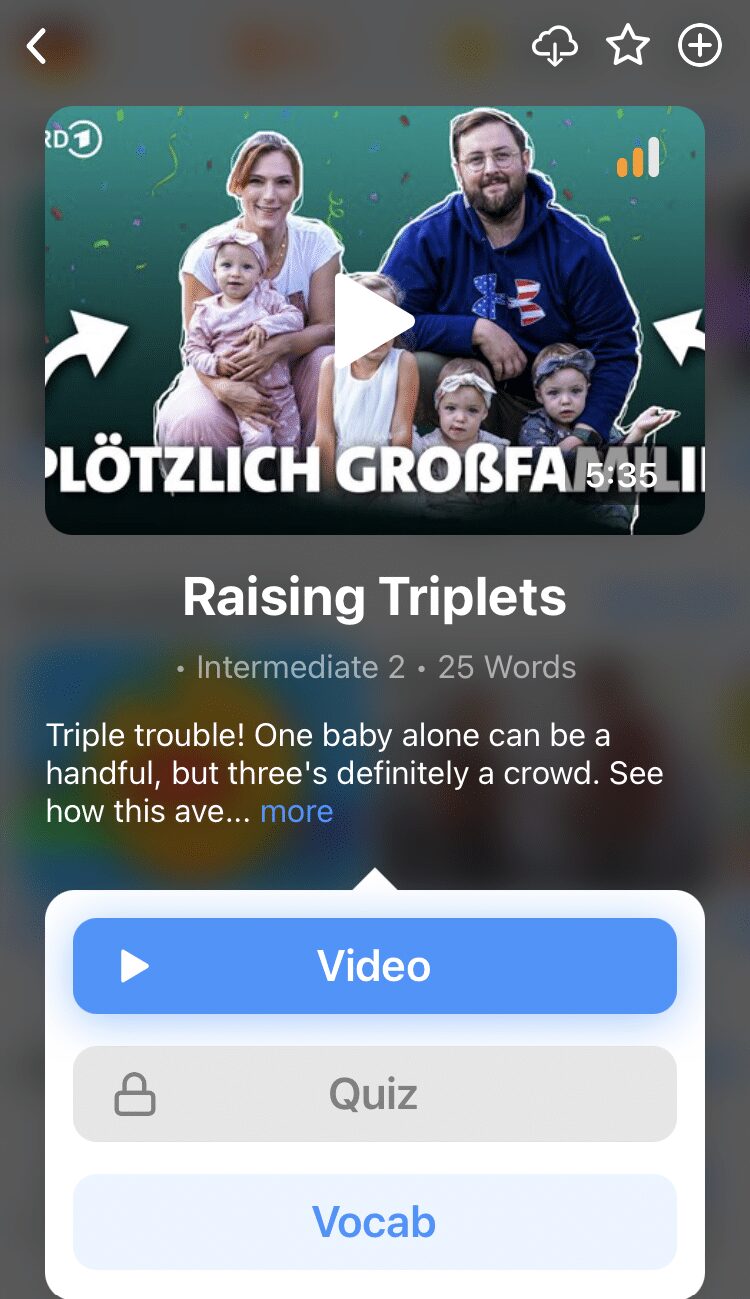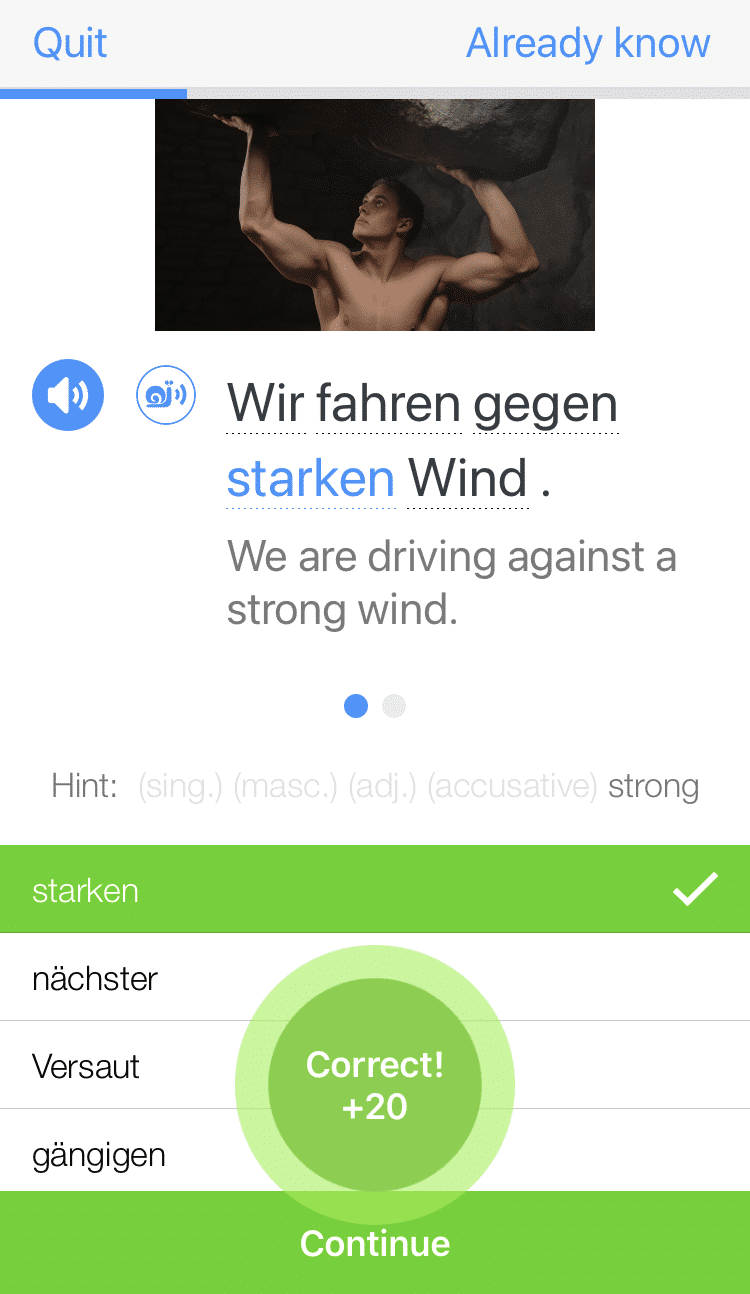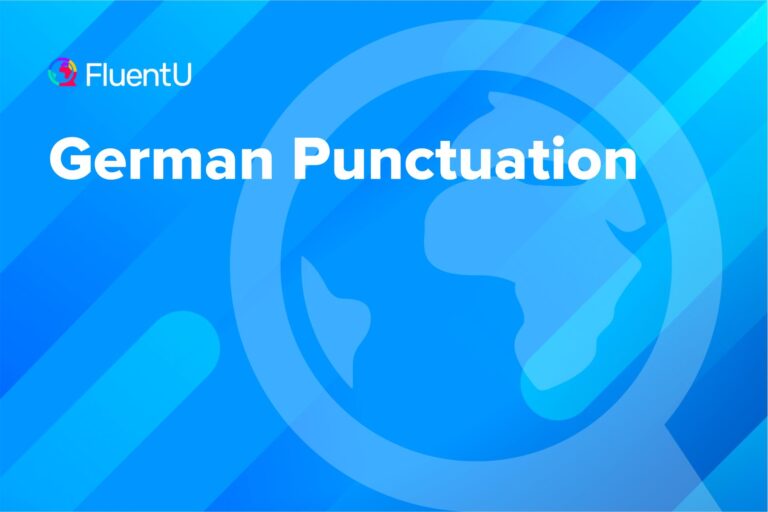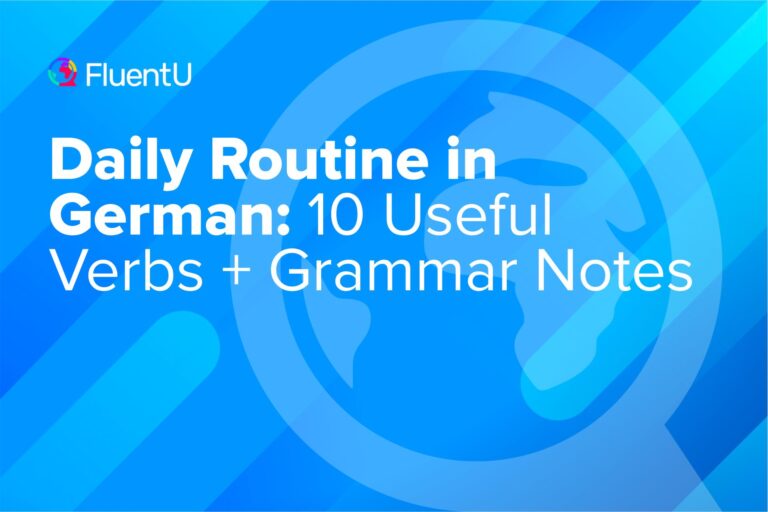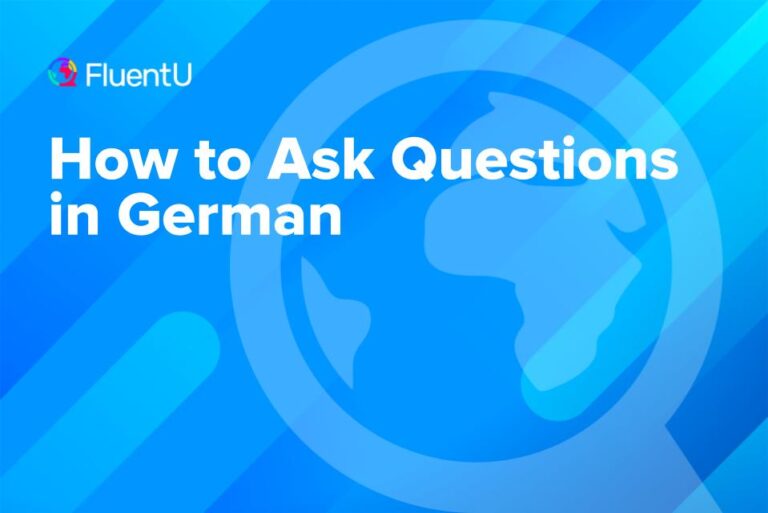The Umlaut in German

The letters Ä, Ö and Ü look so similar to A, O and U… But, tempting as it might be, you can’t simply ignore those little dots—the umlaut in German—when writing or speaking.
This simple guide will show you how to recognize and use umlauts in German, whether you’re typing them out, conjugating verbs or trying to pronounce them the right way.
Download: This blog post is available as a convenient and portable PDF that you can take anywhere. Click here to get a copy. (Download)
When Are Umlauts Used in German?
Below are four very common scenarios where you’ll need to recognize umlauts in German. These of course aren’t the only scenarios where you’ll encounter umlauts, but they’re a great starting point to get comfortable with the concept.
1. Plural Nouns
Plural nouns are often the first places that German learners encounter the umlaut. Most commonly, when the noun contains “u,” “au,” or “o” in the stem, the plural forms have umlauts.
Or, sometimes the plural forms have an umlaut when the noun begins with a vowel.
| Buch (Book) | Bücher (Books) |
| Wort (Word) | Wörter (Words) |
| Baum (Tree) | Bäume (Trees) |
| Haus (House) | Häuser (Houses) |
| Apfel (Apple) | Äpfel (Apples) |
| Bruder (Brother) | Brüder (Brothers) |
2. Comparatives and Superlatives
Comparatives are words that show how one thing has more or less of a quality than another (e.g. “bigger” in English). A superlative shows that one thing has the most or the least of some quality (e.g. “biggest”).
In German, if there’s an “a” or an “o” in the stem of an adjective, rest assured there’s going to be an umlaut in the comparative and superlative forms (with a few exceptions, of course).
| hoch (high) | höher (higher) | am höchsten (the highest) |
| lang (long) | länger (longer) | am längsten (the longest) |
| groß (big/tall) | größer (bigger/taller) | am größten (biggest/tallest) |
3. Present Tense Modal Verbs
Modal verbs are auxiliary (or “helping”) verbs that are used alongside the main verb for a specific purpose—such as indicating permission, desire or ability to do something.
Some of the most important German modal verbs include können (can), sollen (should), müssen (must), dürfen (may) and wollen (to want).
The modal verbs that contain umlauts can be quite tricky to handle, because you’ll only see the umlaut in certain forms of the verb. For example, let’s look at the present tense conjugations of the modal verb können.
| ich kann | I can |
| du kannst | you [informal] can |
| er kann / sie kann / es kann | he can/she can/it can |
| wir können | we can |
| ihr könnt | you [plural] can |
| Sie/ sie können | you [formal]/they can |
What we can see is that if the modal verb contains an umlaut in the infinitive form (e.g. können), then the wir, ihr and Sie/sie present tense conjugations have an umlaut, but not the ich, du and the er/sie/es forms.
4. Verbs in the Subjunctive
Specifically, you’ll often find umlauts in the konjunktiv II präteritum (past subjunctive) form of German verbs.
This is notable because it makes it really easy to put these verbs into the past subjunctive. All you have to do is make small changes to the past tense form of the verb to make it a past subjunctive form.
Let’s take a look at the verb haben (to have) in the past tense.
| ich hatte | I had |
| du hattest | you [informal] had |
| er hatte / sie hatte / es hatte | he had/she had/it had |
| wir hatten | we had |
| ihr hattet | you [plural] had |
| Sie/ sie hatten | you [formal]/they had |
Now compare those forms to the konjunktiv II präteritum.
| ich hätte | I would have |
| du hättest | you [informal] would have |
| er hätte / sie hätte / es hätte | he would have/she would have/it would have |
| wir hätten | we would have |
| ihr hättet | you [plural] would have |
| Sie/ sie hätten | you [formal]/they would have |
All we’ve had to do to form this is take the stem of the verb in the simple past and add on an umlaut, so change the a to a ä.
The same goes for many verbs in the konjunktiv II, such as the words below.
| geben | gäbe |
| kommen | käme |
| tun | täte |
| brauchen | bräuchte |
| wissen | wüsste |
| sein | wäre |
To see the different ways umlauts are used in German, you can look up examples on FluentU and listen to how native speakers say it.
FluentU takes authentic videos—like music videos, movie trailers, news and inspiring talks—and turns them into personalized language learning lessons.
You can try FluentU for free for 2 weeks. Check out the website or download the iOS app or Android app.
P.S. Click here to take advantage of our current sale! (Expires at the end of this month.)
How to Pronounce Vowels with an Umlaut
The Ä sound is fairly simple. It sounds like “eh” in English. Practice with words like spät (late) and Universität (university). Check out how to pronounce the Ä in this video.
The Ö pronunciation is somewhat similar to the above, except the lips should be shaped to create the letter O. Practice with words like Löwe (lion) and Möwe (seagull). There are more tips on how to pronounce the Ö here.
The Ü sound can be pronounced by saying a long “ee” sound, and then closing your lips like you’re about to kiss someone. Practice with words like kühl (cool). Check out more on how to pronounce the Ü here.
Some common umlaut pronunciation mistakes include:
- Not pouting the mouth enough for the Ö and the Ü
- Simply not stressing the vowel enough
A sharp pout is the key to the air being pushed out of the mouth in the right manner, therefore giving the right touch to the umlaut pronunciation.
Here’s another video brings it all together so you can master Ä, Ö and Ü.
Need even more practice? Another useful idea is to make a list of common words in the form of flashcards that use the umlauts. Also try pronouncing this list below!
| Äpfel (apple) | hören (to listen) |
| Bäume (trees) | Jäger (hunter) |
| Diät (diet) | Käse (cheese) |
| föhnen (to blow dry) | Lärm (noise) |
| Größe (size) | Münze (coin) |
| nördlich (north of) | Süd (south) |
| Öl (oil) | Tür (door) |
| Rätsel (riddle) | über (above) |
| Vögel (bird) | Wörter (words) |
How to Type Umlauts
Do you have an ordinary laptop and need to type umlauts?
For PCs, the quick hack is to use Alt key shortcuts. However, this can get cumbersome, so you might also want to keep a document handy with letters that have umlauts to copy-paste.
For Macs, you can just hold down the keys A, U and O for a second or so, and a menu will pop up with special characters including the umlaut. The same option is available for iOS and Android mobile devices.
On mobile devices, you can also often add additional keyboards, and adding in a German language one will mean you have all umlauts right there at your fingertips! No codes or extended taps necessary!
Most German beginners tend to ignore the fact that umlauts exist and try to pronounce them normally.
Well, by doing that, you’re robbing German of its very essence, and also leaving yourself open to being misunderstood! So pout those lips and get practising the umlauts in German.
Download: This blog post is available as a convenient and portable PDF that you can take anywhere. Click here to get a copy. (Download)
And One More Thing...
Want to know the key to learning German effectively?
It's using the right content and tools, like FluentU has to offer! Browse hundreds of videos, take endless quizzes and master the German language faster than you've ever imagine!
Watching a fun video, but having trouble understanding it? FluentU brings native videos within reach with interactive subtitles.
You can tap on any word to look it up instantly. Every definition has examples that have been written to help you understand how the word is used. If you see an interesting word you don't know, you can add it to a vocabulary list.
And FluentU isn't just for watching videos. It's a complete platform for learning. It's designed to effectively teach you all the vocabulary from any video. Swipe left or right to see more examples of the word you're on.
The best part is that FluentU keeps track of the vocabulary that you're learning, and gives you extra practice with difficult words. It'll even remind you when it’s time to review what you’ve learned.
Start using the FluentU website on your computer or tablet or, better yet, download the FluentU app from the iTunes or Google Play store. Click here to take advantage of our current sale! (Expires at the end of this month.)
